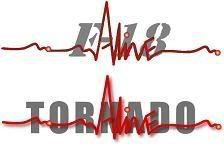
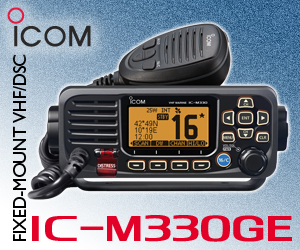




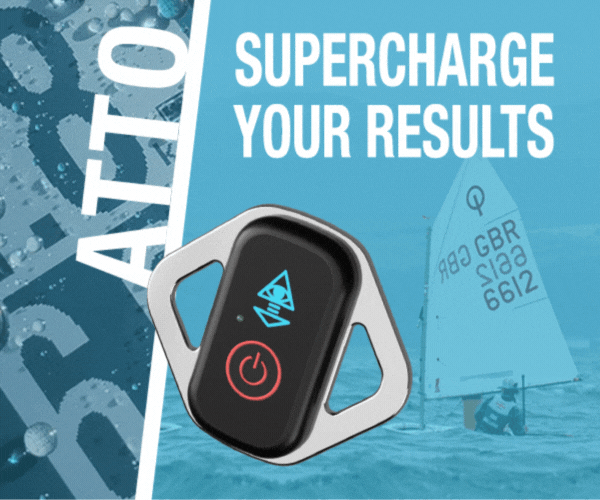
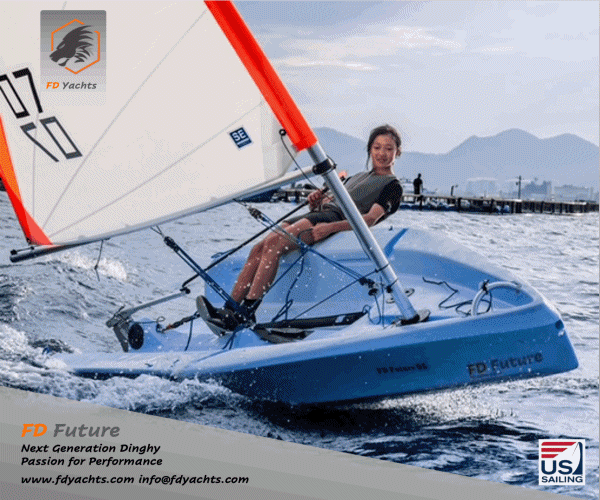
-(1)-202408140552.gif)




| Laser 140101 Tynemouth |
 |
| Laser 28 - Excellent example of this great design Hamble le rice |
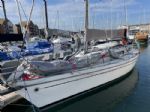 |
| Rossiter Pintail Mortagne sur Gironde, near Bordeaux |
 |
List classes of boat for sale |
Foiling 18' skiff |
Post Reply 
|
Page <1 23456> |
| Author | |||
Prince Buster 
Really should get out more 
Joined: 15 Dec 05 Location: United Kingdom Online Status: Offline Posts: 1146 |
 Post Options Post Options
 Quote Quote  Reply Reply
 Topic: Foiling 18' skiff Topic: Foiling 18' skiffPosted: 11 Sep 06 at 8:18pm |
||
lol! no seriously bns i can't see the thing, can someone make it right for me!! |
|||
|
international moth - "what what?"
|
|||
 |
|||
CT249 
Far too distracted from work 
Joined: 08 Jul 06 Online Status: Offline Posts: 399 |
 Post Options Post Options
 Quote Quote  Reply Reply
 Posted: 12 Sep 06 at 12:44am Posted: 12 Sep 06 at 12:44am |
||
|
About the racks; someone (on SA I think) from the Association said that the racks have been extended (to 17' from 14', I think) to allow the boat to carry a 36ft tall rig for open races.
Old-time (ie the 1980s) skiffies will tell you that 17' is woosy. At one time the limit was 22'; only sailed on once and in light winds but it was a looooooooong way across. Before that limitation was brought in, the mid 1980s "Bradmill" won the "worlds" with a 32' wingspan. Masts were up to 45 feet. Boat weight were down to 99lb/45kg for the bare hull. Budgets were over $200,000 per season, or about 7+ times the average income I think. |
|||
 |
|||
Strawberry 
Really should get out more 

Joined: 21 Jun 05 Location: United Kingdom Online Status: Offline Posts: 1337 |
 Post Options Post Options
 Quote Quote  Reply Reply
 Posted: 12 Sep 06 at 11:16am Posted: 12 Sep 06 at 11:16am |
||
|
That is awesome! * bows down to worship "Bradmill" * |
|||
|
Cherub 2649 "Dangerous Strawberry
|
|||
 |
|||
Jack Sparrow 
Really should get out more 

Joined: 08 Feb 05 Location: United Kingdom Online Status: Offline Posts: 2965 |
 Post Options Post Options
 Quote Quote  Reply Reply
 Posted: 12 Sep 06 at 11:29am Posted: 12 Sep 06 at 11:29am |
||
But were they any faster than now? |
|||
 |
|||
m_liddell 
Really should get out more 
Joined: 27 May 05 Location: United Kingdom Online Status: Offline Posts: 583 |
 Post Options Post Options
 Quote Quote  Reply Reply
 Posted: 12 Sep 06 at 12:31pm Posted: 12 Sep 06 at 12:31pm |
||
|
There is some stuff written on rack width on 18's in 'High Performance Sailing'. I don't have it with me but apparently the smaller racks ended up being faster.
|
|||
 |
|||
CT249 
Far too distracted from work 
Joined: 08 Jul 06 Online Status: Offline Posts: 399 |
 Post Options Post Options
 Quote Quote  Reply Reply
 Posted: 12 Sep 06 at 1:46pm Posted: 12 Sep 06 at 1:46pm |
||
|
Were they faster? It's a subject for some debate. Brownie, who won the "worlds" with Bradmill (and designed it so he has some vague idea; his next boat Entrad is the one pictured at 35 knots in Bethwaite's book) reckons the big wing boats became too unwieldly and had too much drag, and the later, lighter Grand Prix boats were quicker.
Some others (like the sailmaker who got second to Bradmill) reckon the big-wing boats were quicker in the special conditions of that regatta, which was sailed off Brisbane where the wind is steady. Tacking the boats was a problem with the massive windage. Still others say that the GP 18s suffered a distinct speed loss in light winds when the big rig was taken out of them. The current Murray 18s with the short wings are unanimously declared to be slower than the 17' (?) wingspan Grand Prix Bethwaite boats. Fastest of them all by some accounts (Brownie and Julian if I recall correctly) was the B 18s that Emmett Lazich (world Moth champ and gold medal 49er coach) fitted with carbon wings and spars. Comparison of wing width, like all advances in 18s, is made difficult by the rule changes that banned new designs and cut down the wings and (later) rigs, leaving the Bethwaite hull out in front because it was designed as a two-hander and therefore suited the smaller rigs and wings (and arguably better suited to the increased speed of modern rigs and materials). The Brown and Murray boats, designed to take more weight and generate more power, were generally not as quick under the smaller rigs and wings when restrictions came in. From a transcript of an interview with Julian, discussing the arrival of AAMI (the first really succesful Bethwaite 18) to the Grand Prix; < http-equiv="content-" content="text/;charset=UTF-8"> "The B18 Mk1 AAIMI 1991 still holds the NE course record to this date. It was 49 minutes around the track. That was a 17' wide boat, it was a heat of the world championship; it was an electrifying day. Even the big machines that happened before didn't come anywhere near. I think we lopped 6 or 7 minutes off it." From the interview with Brownie (I've still got the Bradmill and Entrad plans in my wardrobe, must drop them back) describing the wide-wing episode for that Brisbane "worlds". “Basically we went out, on average, 18 inches a day” recalls Brownie. “We were at a wing width of 28', and then we had two-foot clip-ons that we called turbochargers. The widest we ever went was 32'; no-one else has been there.” “The wider you went, the more sail area you could carry in more wind, so the loads on the boats went up dramatically. We were carrying our number 2 rig ( high ) in 22 knots of breeze, were you'd usually pull if off in around 15 or 17 knots.” “So every time you went out, apart from the obvious things like lengthening the mainsheet, jibsheet, control lines, trap wires, and tiller extensions, you also had to put carbon on the mast and the spinnaker pole, 'cause the loads went right up.” Height and pole of #1 rig The massive width and power of the boats had a major effect on the style of racing. “The weight went up as the rigs got heavier, and your manoevrability was greatly reduced. Normally you'd just come off the start line and pick a side, go to a layline, come in, tack or gybe at the mark and go to another lay. So basically, you were just doing a square course, you minimized tacks and gybes and just went for the straight line speed.” “The noticeable difference was when you came in and out of the tacks and onto the plane. You had more weight to get on the plane, so the transitional area before planing was extended by the extra weight, but that was compensated by the extra horsepower you were generating out of your sails.” Sudden breaking free. “Because of the width of the wings, the timing of moving through the wings was so critical - if you were late getting across you'd capsize, and if you were too early you'd put the windward wing in. The boats were slower to turn, but the crew had to move faster to get across. So you were basically sprinting from one side to the other to have a good tack. You had to be very definite in turning the boat - if the guys started moving across the boat, you were committed to go.” “When you came into the tack and off the plane the boat would stop, because you've got all this sail area up there with the same skinny hull. The drag of the rig was another thing you had to overcome, because it wasn't designed; all this stuff was just added on during the regatta.” Spectacular as they were, Rob says that the “dinosaur” 18s were slower than the smaller, more efficient breed that evolved when rigs and wings were restricted. “The mid '90s Grand Prix style 18 was, I think, the pinnacle of design. It was an unforgiving hull shape, with knife-edge sailing in light and fresh. The boats were marginal anything over 25 knots, and you had a lot of trouble keeping the bows out, but they were fantastic boats upwind and if you sailed them right downwind and had a good skill level on board, you'd be able to get round.” < http-equiv="content-" content="text/;charset=UTF-8"> The amazing thing was, the GP hull was probably the ultimate hull shape for the era. When Emmett then got rid of weight in wings, poles, spars, by going carbon all the way through, the performacne increase he says was absolutely dramatic. Coming out of a tack or gybe, the boat would accelerate and you'd get thrown backwards." 'Scuse the long post. |
|||
 |
|||
Isis 
Really should get out more 

Joined: 01 Sep 05 Online Status: Offline Posts: 2753 |
 Post Options Post Options
 Quote Quote  Reply Reply
 Posted: 12 Sep 06 at 1:58pm Posted: 12 Sep 06 at 1:58pm |
||
|
Very intersting post once again mr CT249, thanks

|
|||
 |
|||
Tornado_ALIVE 
Really should get out more 

Joined: 07 Nov 04 Location: Australia Online Status: Offline Posts: 611 |
 Post Options Post Options
 Quote Quote  Reply Reply
 Posted: 12 Sep 06 at 2:04pm Posted: 12 Sep 06 at 2:04pm |
||
Appologies not necessary Chris........ Great post |
|||
 |
|||
headfry 
Far too distracted from work 
Joined: 15 Jul 04 Location: United Kingdom Online Status: Offline Posts: 359 |
 Post Options Post Options
 Quote Quote  Reply Reply
 Posted: 12 Sep 06 at 2:21pm Posted: 12 Sep 06 at 2:21pm |
||
|
fascinating reading!
 thank you CT249 thank you CT249
|
|||
 |
|||
tgruitt 
Really should get out more 

Joined: 02 Dec 04 Online Status: Offline Posts: 2479 |
 Post Options Post Options
 Quote Quote  Reply Reply
 Posted: 12 Sep 06 at 3:37pm Posted: 12 Sep 06 at 3:37pm |
||
|
brilliant, cheers.
|
|||
|
Needs to sail more...
|
|||
 |
|||
Post Reply 
|
Page <1 23456> |
| Forum Jump | Forum Permissions  You cannot post new topics in this forum You cannot reply to topics in this forum You cannot delete your posts in this forum You cannot edit your posts in this forum You cannot create polls in this forum You cannot vote in polls in this forum |
Copyright ©2001-2010 Web Wiz
Change your personal settings, or read our privacy policy











 Printable Version
Printable Version Delicious
Delicious Digg
Digg Facebook
Facebook Furl
Furl Google
Google MySpace
MySpace Newsvine
Newsvine reddit
reddit StumbleUpon
StumbleUpon Twitter
Twitter Windows Live
Windows Live Yahoo Bookmarks
Yahoo Bookmarks Topic Options
Topic Options
